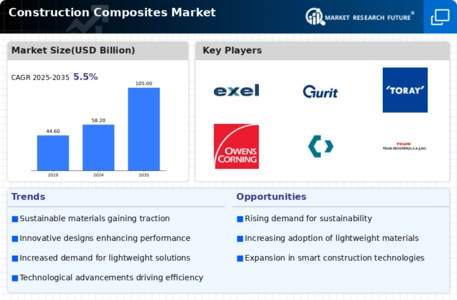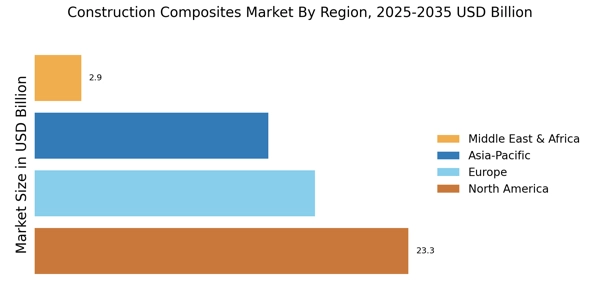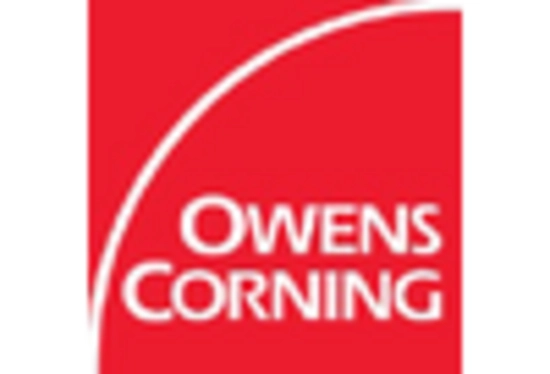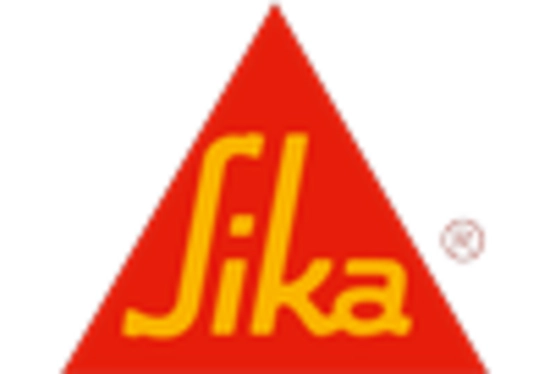Cost Efficiency
Cost efficiency is a critical driver in the Construction Composites Market. As construction projects face budget constraints, the demand for materials that offer both performance and affordability rises. Composites, which often require less maintenance and have longer lifespans compared to traditional materials, present a compelling value proposition. The market is projected to grow at a CAGR of 8% through 2028, driven by the need for cost-effective solutions. By reducing overall project costs, construction composites are becoming increasingly favored among builders and contractors, thereby enhancing their market presence.
Regulatory Support
Regulatory support is emerging as a significant driver in the Construction Composites Market. Governments worldwide are implementing policies that promote the use of advanced materials in construction to enhance safety and sustainability. These regulations often incentivize the adoption of composites, which are recognized for their superior performance characteristics. As a result, the market is expected to benefit from increased investments in infrastructure projects that comply with these regulations. The anticipated growth in the construction sector, coupled with supportive policies, is likely to bolster the demand for construction composites, further solidifying their market position.
Urbanization Trends
Urbanization trends significantly impact the Construction Composites Market. Rapid urban growth necessitates the development of infrastructure, including residential and commercial buildings. Composites, with their lightweight and high-strength characteristics, are well-suited for modern construction demands. The urban population is projected to reach 5 billion by 2030, driving the need for efficient building materials. This surge in urbanization is likely to create substantial opportunities for composite manufacturers, as they cater to the increasing demand for sustainable and durable construction solutions. Consequently, the market is expected to witness robust growth in the coming years.
Technological Innovations
Technological innovations play a pivotal role in shaping the Construction Composites Market. Advancements in manufacturing processes, such as 3D printing and automated production, enhance the efficiency and precision of composite materials. The integration of smart technologies, including sensors and IoT, into construction composites is also gaining traction. These innovations are expected to increase the market size, which is anticipated to reach USD 50 billion by 2026. As construction projects demand higher performance and lower costs, the adoption of advanced composites becomes increasingly attractive, thereby propelling market expansion.
Sustainability Initiatives
The Construction Composites Market is increasingly influenced by sustainability initiatives. As environmental concerns gain prominence, construction companies are prioritizing eco-friendly materials. Composites, known for their durability and lightweight properties, align well with these initiatives. The market for sustainable construction materials is projected to reach USD 1 trillion by 2030, indicating a robust demand for composites that minimize environmental impact. Furthermore, regulatory frameworks are evolving to support sustainable practices, compelling manufacturers to innovate. This shift not only enhances the appeal of construction composites but also positions them as a viable alternative to traditional materials, thereby driving market growth.


















Leave a Comment